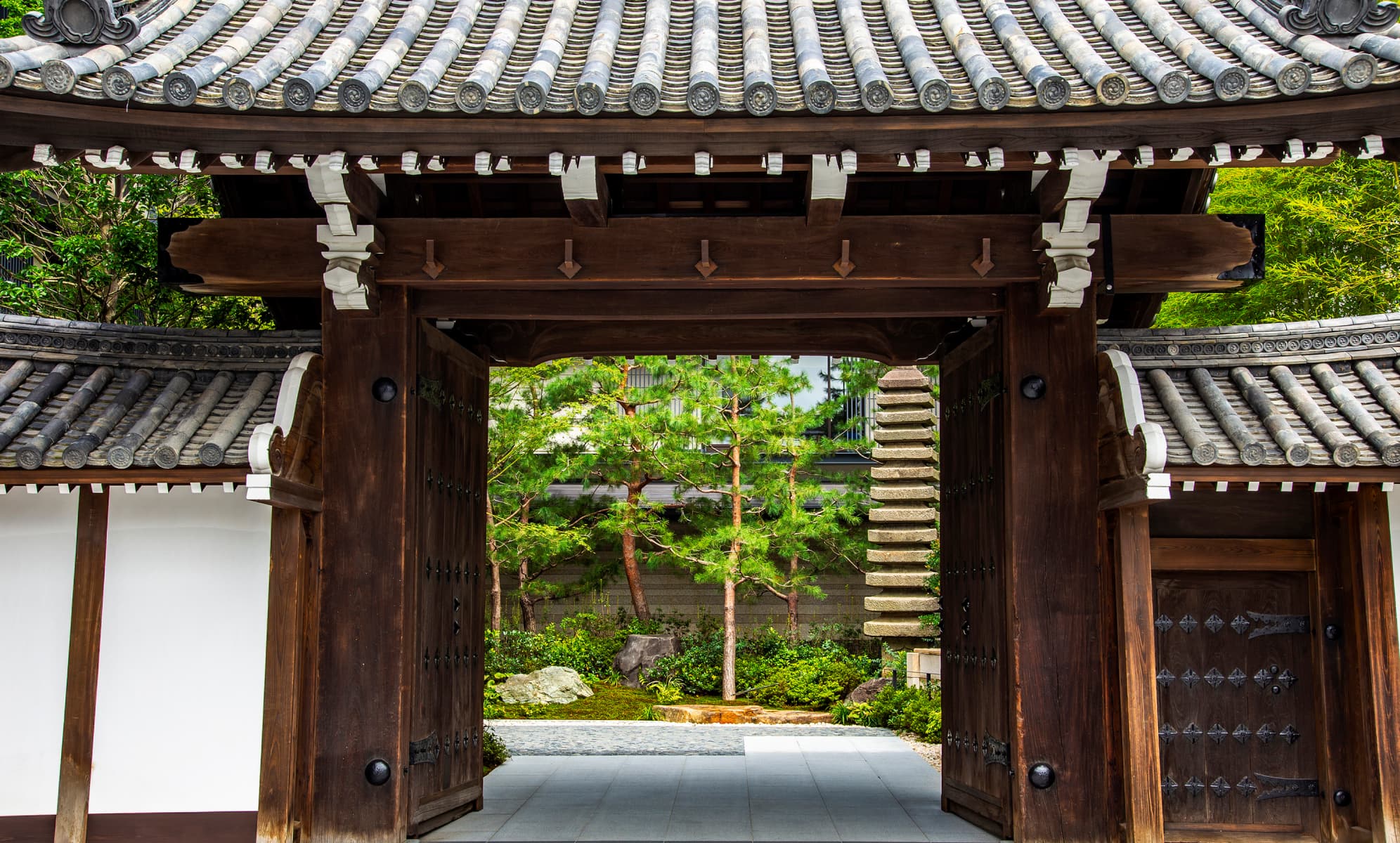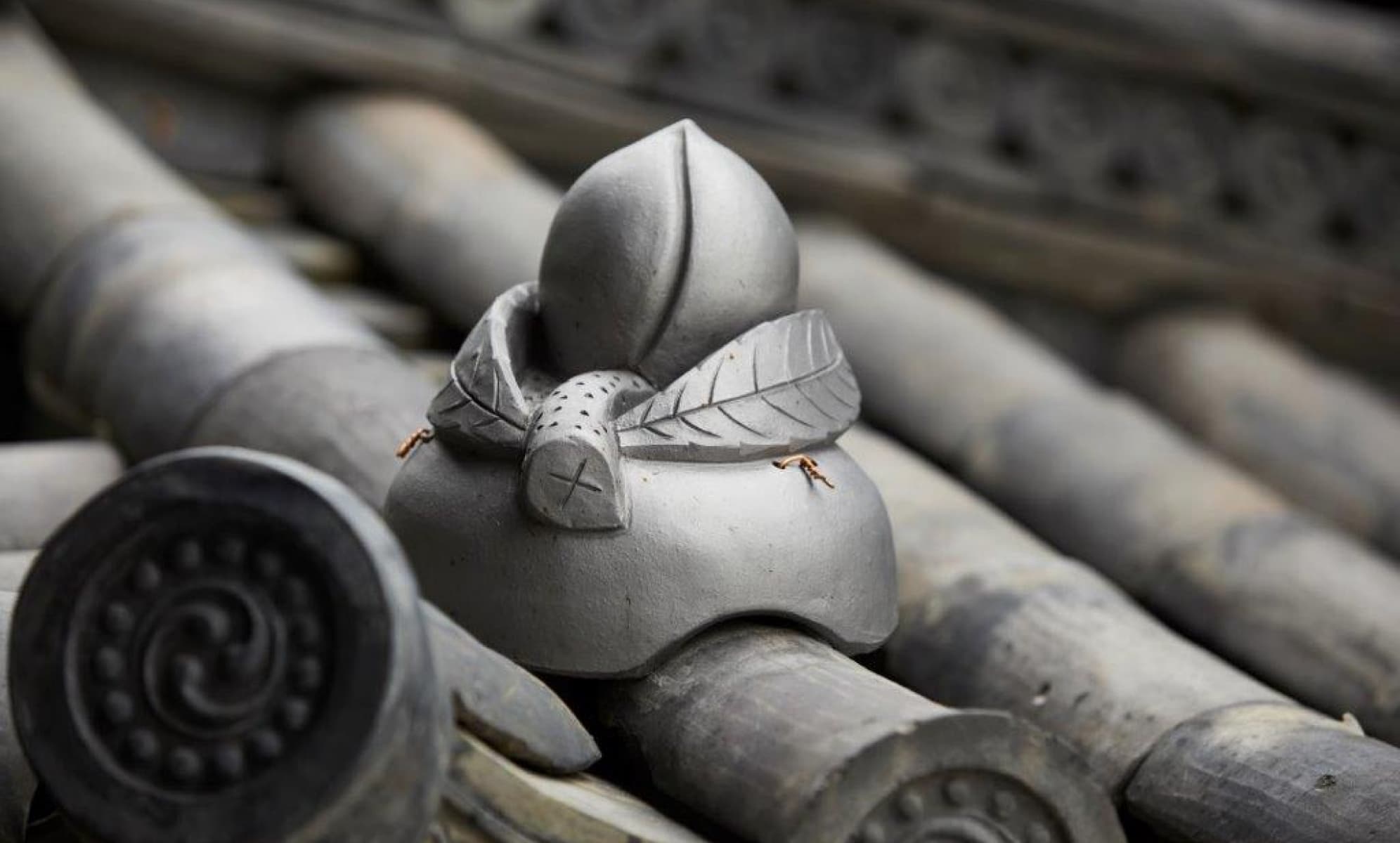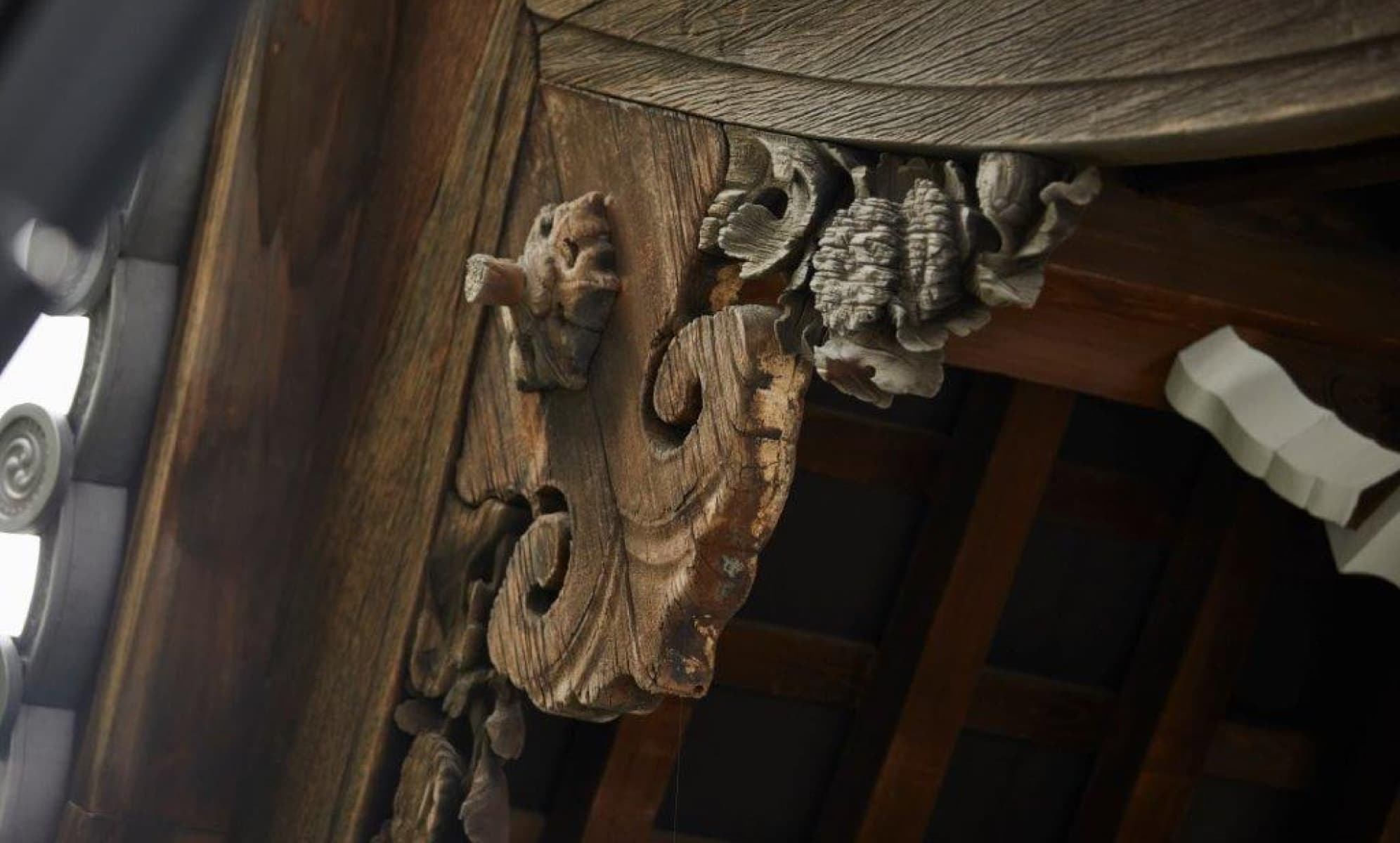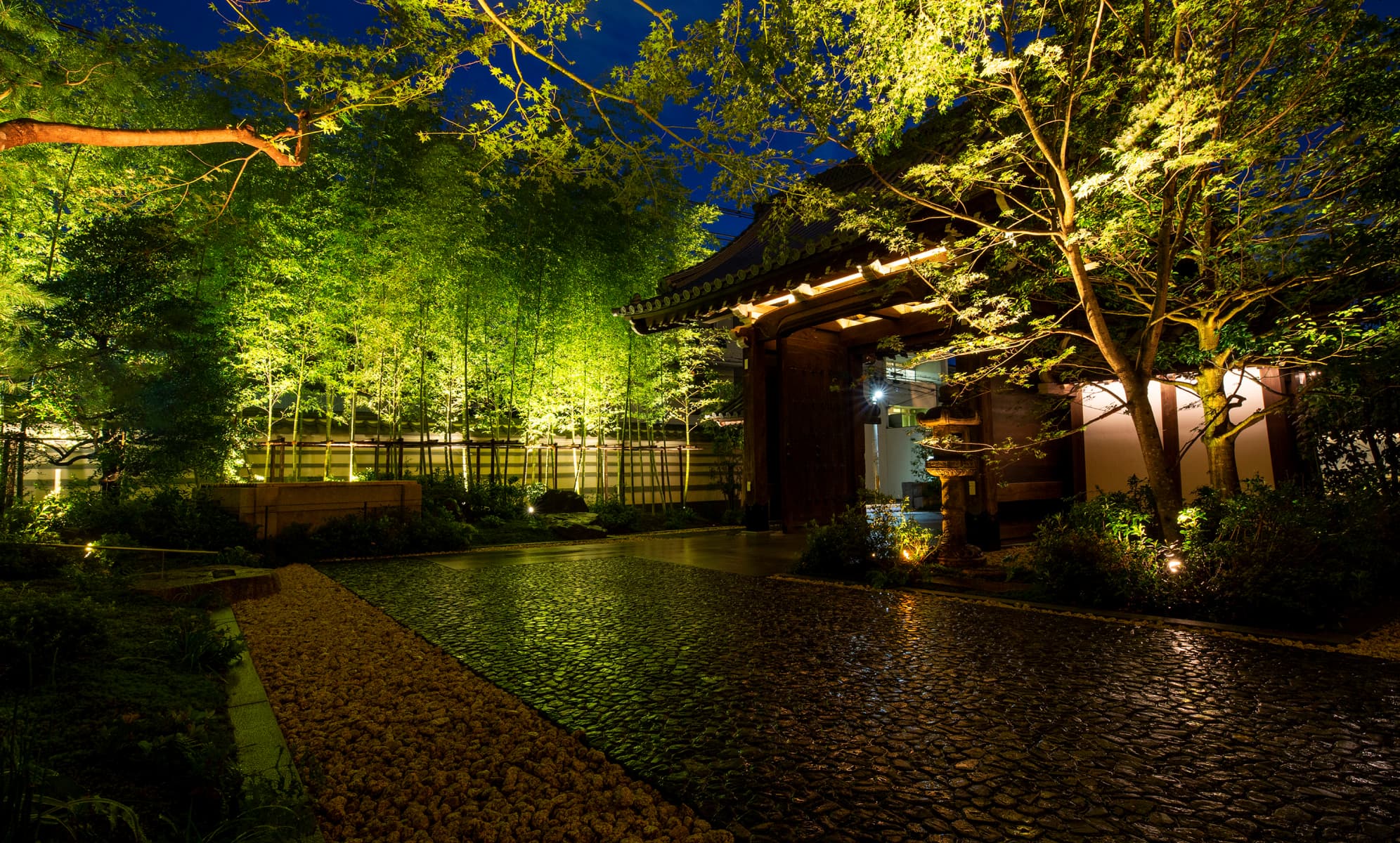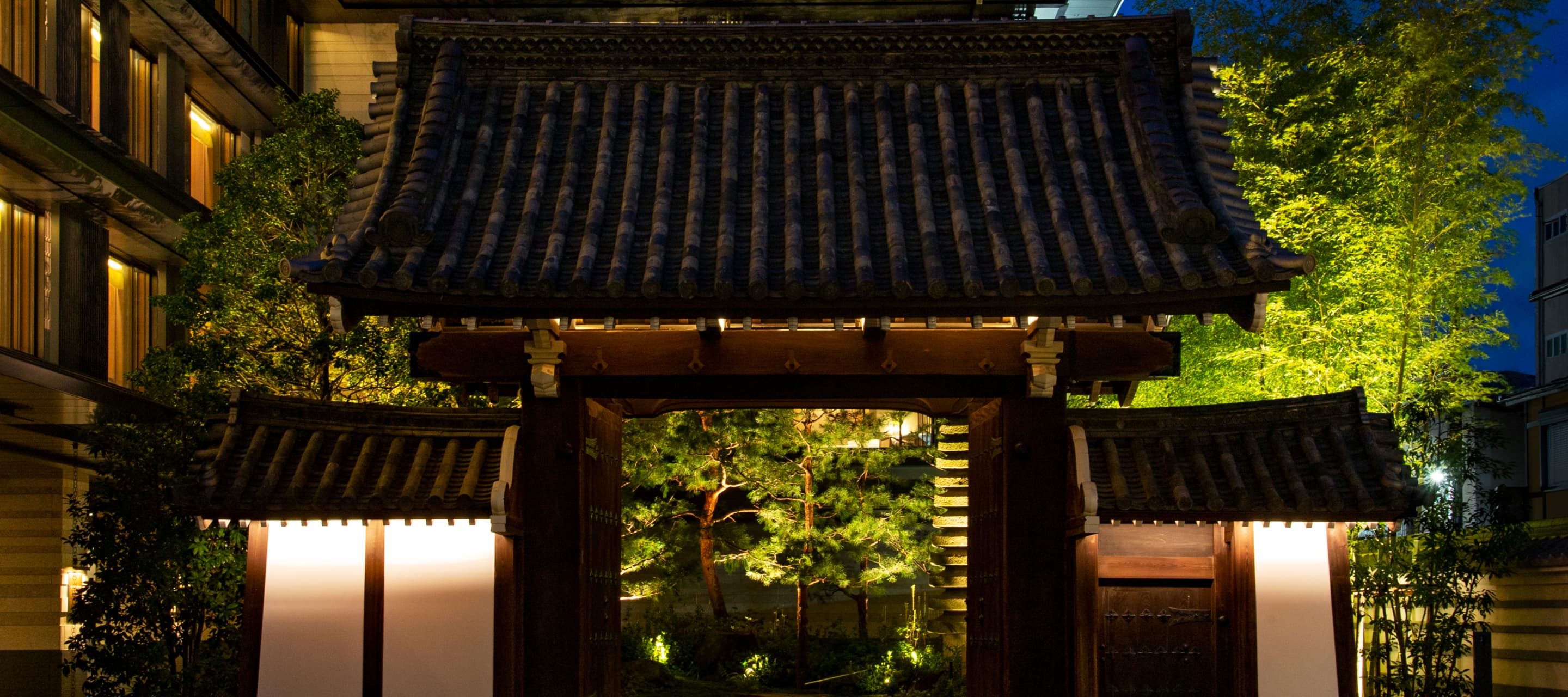

The Kajiimiya Gate
The Gate stands as a symbol of the heritage and history of the Mitsui family
Some 300 years have passed since the Kajiimiya Gate was built,
and it spent some of those years in the possession of the Mitsui
family.
Given new life by skilled carpenters and restorers, the gate has
been taken apart and rebuilt to provide guests arriving at HOTEL
THE MITSUI KYOTO a grand welcome.
Kajiimiya - also called the “Deep-Seated Interior of Kyoto” -
refers to an old temple of the Tendai sect – what is now
Sanzen-in - located in the district of Ohara to the north of
Kyoto.
In 1698 (Genroku 11), the Kajiimiya Court moved from Ohara to a
location close to the junction of Kawaramachi and Imadegawa. The
gate was constructed over 300 years ago in 1703 (Genroku 16) at
the new location of the Kajiimiya Court. In the years that
followed the gate was relocated to Ohara until 1935 (Showa 10),
when it was again relocated to the Aburakoji Residence of the
Mitsui family.
The shape and architecture of the gate is known as a yakuimon (gabled-roof gate with both male and female joists, clay-roof tiled with adjacent low walls). This type of gate can be seen in castles and residences, not just temples and shrines. The space between the main pillars is 4.5m and the gate is 7.4m tall, making it quite an imposing structure. It is difficult to describe in words, but those who see the gate find it quite an arresting sight.
Having decided that the gate would frame the entrance to HOTEL
THE MITSUI KYOTO, the restoration work on the Kajiimiya Gate was
undertaken by Fujita Shaji Kensetsu, a team of
miyadaiku carpenters
specializing in temple and shrine construction based in Fukui
Prefecture, overseen by Shimizu Corporation, a company
well-versed in building temples and shrines.
The Kajiimiya Gate has undergone repair work every 30 to 50
years, but the last major restoration was back in 1935 (Showa
10).
The gate was completely disassembled, including the adjacent low
walls, and each piece was given a thorough examination with
damaged and rotted portions being repaired or replaced where
necessary with newly fashioned parts. Old techniques were
blended with modern techniques where required. Over half of the
rooftiles were still fit for use. The old way of securing these
tiles was to use old dirt and clay to hold them in place, but
due considerations for safety and earthquake-proofing, the
rooftiles on the restored gate are held in place using wire. In
terms of the wooden components, over 80% of the original parts
were retained. Structurally the Kajiimiya Gate is in the best
shape it has ever been.
This is one example of Heritage and
Rebirth at HOTEL THE MITSUI KYOTO.


